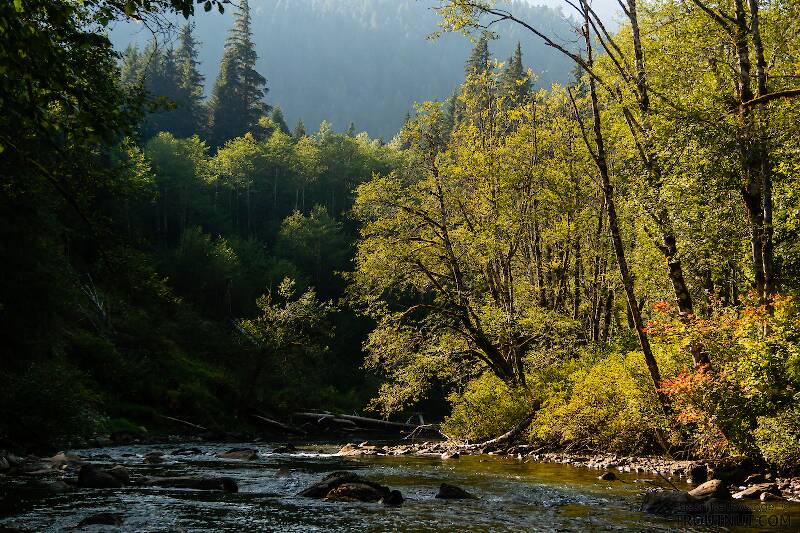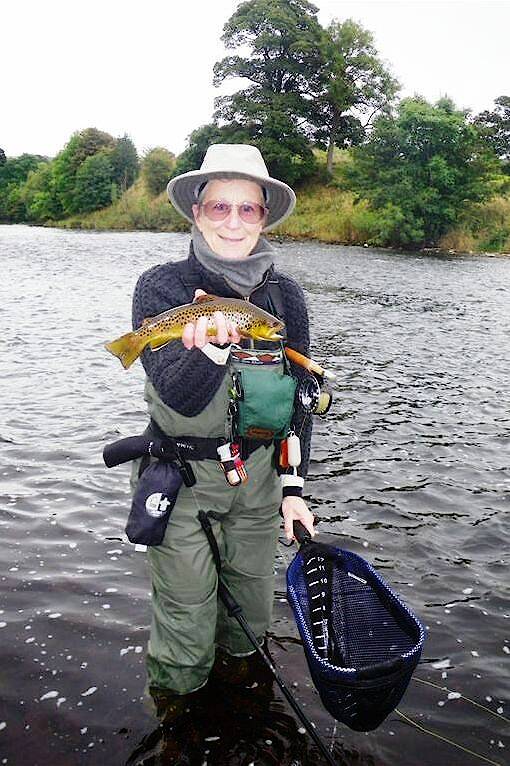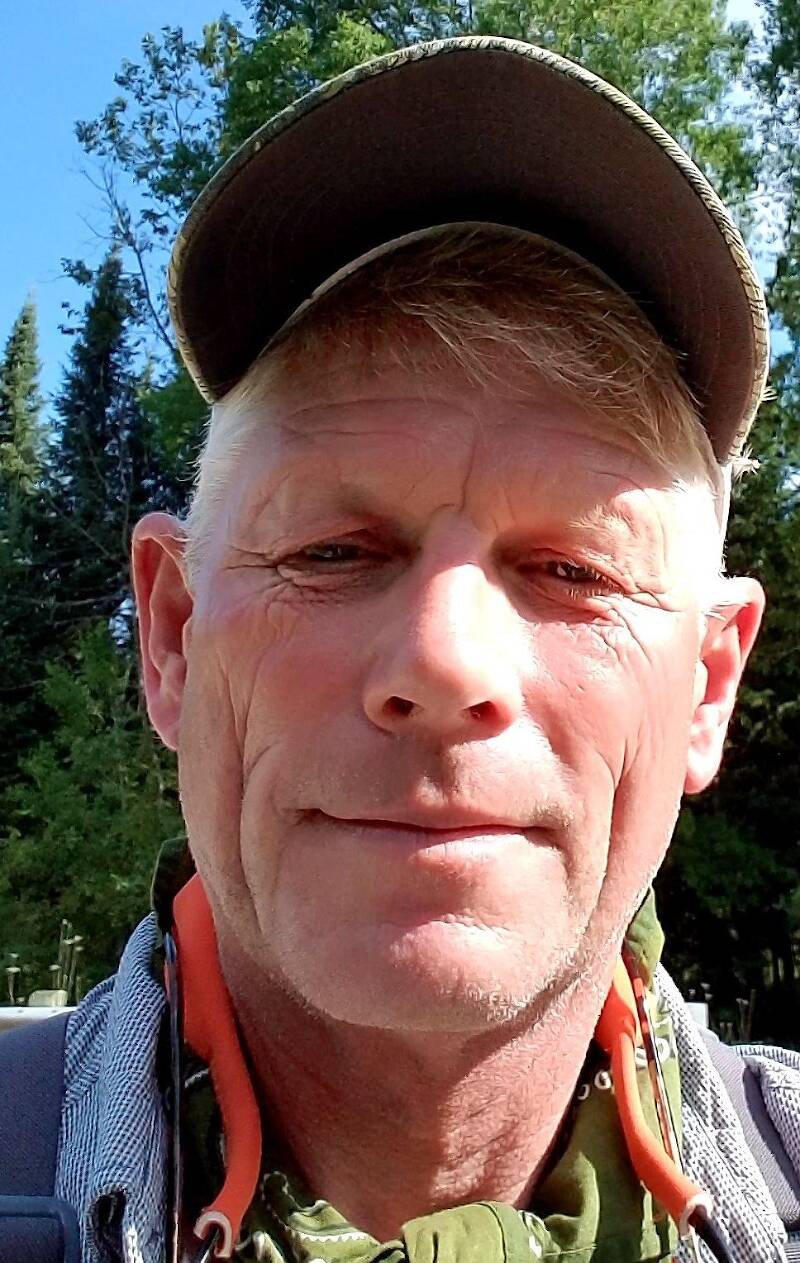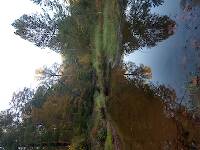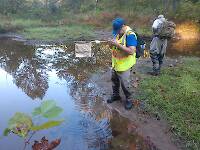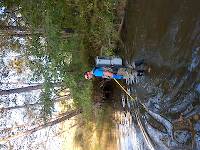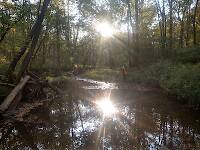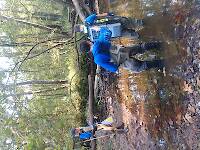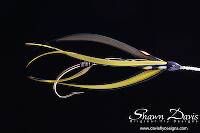
Salmonflies
Pteronarcys californica
The giant Salmonflies of the Western mountains are legendary for their proclivity to elicit consistent dry-fly action and ferocious strikes.
Featured on the forum

Troutnut is a project started in 2003 by salmonid ecologist Jason "Troutnut" Neuswanger to help anglers and
fly tyers unabashedly embrace the entomological side of the sport. Learn more about Troutnut or
support the project for an enhanced experience here.
LowBudget on Jan 8, 2016January 8th, 2016, 1:37 pm EST
I worked on this project with my students to produce ID cards for middle school and high school students, as well as citizen monitors of stream quality for the New York State Department of Environmental Conservation's WAVE program as well as the Delaware Riverkeeeper Network stream monitoring program. The macroinvertebrates were collected from the West Branch of the Delaware River watershed in New York.
The cards may be downloaded from;
http://www.learnatboces.com/macroinvertebrates-id-cards
You can download them individually by clicking on the thumbnail or you can download the entire set by clicking on the link under Resources at the bottom of the page.
I hope some of you may find this set of cards useful.
Ed
Free Stream Macroinvertebrate Identification Cards
High school students in career and technical education programs at the Harrold Campus of DCMO BOCES collected, identified, photographed, and designed digital identification cards of stream insects and aquatic macroinvertebrates (animals that you can see without magnification that do not have backbones). A grant from the Catskill Watershed Corporation aimed at water conservation education allowed the purchase of cameras, and other materials to carry out this project.
Students in the Conservation and Equipment Technology, and Security and Law Enforcement programs collected and identified the stream organisms from Trout Creek. Students in the Visual Communications program photographed the animals, and used the Photoshop program to edit the images. The cards were then designed by the students using the InDesign graphics program. The cards will be helpful to schools, individuals, and groups that monitor stream health by collecting and identifying stream macroinvertebrates. With declining budgets for school supplies a free source of identification cards will be helpful to high school environmental science and living environment classes across the region and further!
The digital cards are available free of charge and copyright free. Just click on the photos on the right side to download the card.
DCMO BOCES serves students with Career and Technical Education in Delaware, Chenango, Madison and Otsego counties in New York State. For more information about the project, contact Edward Engelman at; engelmane@dcmoboces.com.
This project was made possible with funds from the Catskill Watershed Corporation in partnership with New York City Department of Environmental Protection
The cards may be downloaded from;
http://www.learnatboces.com/macroinvertebrates-id-cards
You can download them individually by clicking on the thumbnail or you can download the entire set by clicking on the link under Resources at the bottom of the page.
I hope some of you may find this set of cards useful.
Ed
Free Stream Macroinvertebrate Identification Cards
High school students in career and technical education programs at the Harrold Campus of DCMO BOCES collected, identified, photographed, and designed digital identification cards of stream insects and aquatic macroinvertebrates (animals that you can see without magnification that do not have backbones). A grant from the Catskill Watershed Corporation aimed at water conservation education allowed the purchase of cameras, and other materials to carry out this project.
Students in the Conservation and Equipment Technology, and Security and Law Enforcement programs collected and identified the stream organisms from Trout Creek. Students in the Visual Communications program photographed the animals, and used the Photoshop program to edit the images. The cards were then designed by the students using the InDesign graphics program. The cards will be helpful to schools, individuals, and groups that monitor stream health by collecting and identifying stream macroinvertebrates. With declining budgets for school supplies a free source of identification cards will be helpful to high school environmental science and living environment classes across the region and further!
The digital cards are available free of charge and copyright free. Just click on the photos on the right side to download the card.
DCMO BOCES serves students with Career and Technical Education in Delaware, Chenango, Madison and Otsego counties in New York State. For more information about the project, contact Edward Engelman at; engelmane@dcmoboces.com.
This project was made possible with funds from the Catskill Watershed Corporation in partnership with New York City Department of Environmental Protection
Ed
Low Budget Fly Tying and Fishing author of "Behind the Fly"
http://edengelman.com/BTF.html
Low Budget Fly Tying and Fishing author of "Behind the Fly"
http://edengelman.com/BTF.html
CaseyP on Jan 8, 2016January 8th, 2016, 5:36 pm EST
this is the answer to a maiden's prayer! like, beyond cool...
at some of our Casting for Recovery retreats, we can have a Bug Walk where wader-clad ladies search for living aquatic life forms in a real trout stream. everyone has a great time and they usually refuse to come out of the water until each lady has found five or six wriggling creatures to show off to their friends. these cards will be a wonderful tool for everyone to refer to.
at other retreats,lacking a stream near the retreat site, we have a "talk" about what trout eat. The ladies usually fall asleep (sorry, Trounuts, aquatic macroinvertebrates just don't do it for lots of folks!).
now at least we can make a bingo game out of it, or hand the cards out on fishing day and see if the ladies and their guides can find real examples.
many, many thanks for the leadership that guided the students, and to the students who put in the hours to make these a real professional tool.
at some of our Casting for Recovery retreats, we can have a Bug Walk where wader-clad ladies search for living aquatic life forms in a real trout stream. everyone has a great time and they usually refuse to come out of the water until each lady has found five or six wriggling creatures to show off to their friends. these cards will be a wonderful tool for everyone to refer to.
at other retreats,lacking a stream near the retreat site, we have a "talk" about what trout eat. The ladies usually fall asleep (sorry, Trounuts, aquatic macroinvertebrates just don't do it for lots of folks!).
now at least we can make a bingo game out of it, or hand the cards out on fishing day and see if the ladies and their guides can find real examples.
many, many thanks for the leadership that guided the students, and to the students who put in the hours to make these a real professional tool.
"You can observe a lot by watching." Yogi Berra
LowBudget on Jan 9, 2016January 9th, 2016, 2:47 am EST
CaseyP
Thank you for your kind words about this project. It was a labor of love. Some of the students embraced the project, others treated it as if they were assembling "Wanted" posters for monsters.
I had hoped that the ID cards would be helpful to others and I am very happy to know that Casting for Recovery, which does so much great work, will be able to use them.
Ed
Thank you for your kind words about this project. It was a labor of love. Some of the students embraced the project, others treated it as if they were assembling "Wanted" posters for monsters.
I had hoped that the ID cards would be helpful to others and I am very happy to know that Casting for Recovery, which does so much great work, will be able to use them.
Ed
Ed
Low Budget Fly Tying and Fishing author of "Behind the Fly"
http://edengelman.com/BTF.html
Low Budget Fly Tying and Fishing author of "Behind the Fly"
http://edengelman.com/BTF.html
Oldredbarn on Jan 9, 2016January 9th, 2016, 9:47 am EST
Ed,
I'm in line to thank you too! I teach the entomology sections at some of the schools my fishing club offers...We are the Michigan Fly Fishing Club. We have a members school, a public school, a youth school, and a Boy Scouts fly fishing merit badge day. All have ento sections.
It would be nice if you offered laminates. :) I will put these in page protectors and pass them around in class so maybe they won't fall asleep on me as I speak. :)
Thanks!
Spence
I'm in line to thank you too! I teach the entomology sections at some of the schools my fishing club offers...We are the Michigan Fly Fishing Club. We have a members school, a public school, a youth school, and a Boy Scouts fly fishing merit badge day. All have ento sections.
It would be nice if you offered laminates. :) I will put these in page protectors and pass them around in class so maybe they won't fall asleep on me as I speak. :)
Thanks!
Spence
"Even when my best efforts fail it's a satisfying challenge, and that, after all, is the essence of fly fishing." -Chauncy Lively
"Envy not the man who lives beside the river, but the man the river flows through." Joseph T Heywood
"Envy not the man who lives beside the river, but the man the river flows through." Joseph T Heywood
Lastchance on Jan 9, 2016January 9th, 2016, 1:32 pm EST
Very generous of you. Thanks so much.
Partsman on Jan 9, 2016January 9th, 2016, 1:37 pm EST
Thanks lowbudget, as I have matured I have become more interested in every aspect of what goes on in the rivers I fish. These will be very helpful,thanks,Mike.
LowBudget on Jan 10, 2016January 10th, 2016, 3:49 am EST
Spence
You are welcome.
We produced them and optimized them for on-screen viewing (RGB color). In my school we bring them up on laptops or Chrome books in the lab to assist in identifying specimens. We only printed them out in the proofing and review stage of the project.
Some folks find it useful to print them and protect them in sleeves or by lamination. Others download them to their iPod's, cell phones, Nooks, etc.
Ed
You are welcome.
We produced them and optimized them for on-screen viewing (RGB color). In my school we bring them up on laptops or Chrome books in the lab to assist in identifying specimens. We only printed them out in the proofing and review stage of the project.
Some folks find it useful to print them and protect them in sleeves or by lamination. Others download them to their iPod's, cell phones, Nooks, etc.
Ed
Ed
Low Budget Fly Tying and Fishing author of "Behind the Fly"
http://edengelman.com/BTF.html
Low Budget Fly Tying and Fishing author of "Behind the Fly"
http://edengelman.com/BTF.html
LowBudget on Jan 10, 2016January 10th, 2016, 3:55 am EST
Lastchance
Thank you.
Free distribution of these was something I wrote into my grant application to the Catskill Watershed Corp. who funded this project. The grant allowed my school to purchase some nice equipment in a year where my school's supply budget had been slashed particularly hard. I am just following through on the commitment that I/we made.
Ed
Thank you.
Free distribution of these was something I wrote into my grant application to the Catskill Watershed Corp. who funded this project. The grant allowed my school to purchase some nice equipment in a year where my school's supply budget had been slashed particularly hard. I am just following through on the commitment that I/we made.
Ed
Ed
Low Budget Fly Tying and Fishing author of "Behind the Fly"
http://edengelman.com/BTF.html
Low Budget Fly Tying and Fishing author of "Behind the Fly"
http://edengelman.com/BTF.html
LowBudget on Jan 10, 2016January 10th, 2016, 3:59 am EST
Partsman
"as I have matured I have become more interested in every aspect of what goes on in the rivers I fish."
Thank you.
I hope that this project inspires some of my students to follow the same path.
Ed
"as I have matured I have become more interested in every aspect of what goes on in the rivers I fish."
Thank you.
I hope that this project inspires some of my students to follow the same path.
Ed
Ed
Low Budget Fly Tying and Fishing author of "Behind the Fly"
http://edengelman.com/BTF.html
Low Budget Fly Tying and Fishing author of "Behind the Fly"
http://edengelman.com/BTF.html
Martinlf on Jan 27, 2016January 27th, 2016, 4:14 pm EST
These are cool. Thanks for sharing.
"He spread them a yard and a half. 'And every one that got away is this big.'"
--Fred Chappell
--Fred Chappell
LowBudget on Jan 30, 2016January 30th, 2016, 10:44 am EST
You are welcome. We embarked on this project with the hope that others will find the macroinvertebrate identification cards informative and useful. Cool is an added bonus!
Ed
Ed
Ed
Low Budget Fly Tying and Fishing author of "Behind the Fly"
http://edengelman.com/BTF.html
Low Budget Fly Tying and Fishing author of "Behind the Fly"
http://edengelman.com/BTF.html
CaseyP on Aug 8, 2017August 8th, 2017, 8:50 am EDT
a couple of years ago, a nice fellow posted on here that he had a set of bug identification pages that anyone was welcome to download and use.
i did.
i printed out a complete set on waterproof paper, put them in a binder, and when the Casting for Recovery ladies went on our "Bug Walk" to learn a little bit of aquatic entomology, this book was a great resource. the ladies would bring their little pans and buckets to the table and figure out what they had. the waterproof paper meant that drips didn't matter.
i'd like to say thank you again.this resource really made a difference!
i did.
i printed out a complete set on waterproof paper, put them in a binder, and when the Casting for Recovery ladies went on our "Bug Walk" to learn a little bit of aquatic entomology, this book was a great resource. the ladies would bring their little pans and buckets to the table and figure out what they had. the waterproof paper meant that drips didn't matter.
i'd like to say thank you again.this resource really made a difference!
"You can observe a lot by watching." Yogi Berra
Quick Reply
Related Discussions
Topic
Replies
Last Reply
2
May 12, 2016
by Partsman
by Partsman
0
Mar 2, 2021
by Jmd123
by Jmd123
Re: A dual mission tonight - plant collecting AND trout fishing! 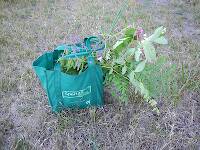
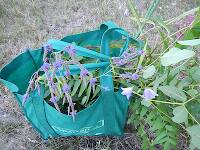
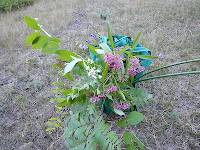
![Couldn't ask for a nicer evening in July - looking up the feeder creek to [REDACTED] Pond for brookies Couldn't ask for a nicer evening in July - looking up the feeder creek to [REDACTED] Pond for brookies](/im_user_share/pic_2543_200.jpg)
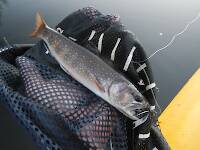
In the Photography Board by Jmd123
+ 2



![Couldn't ask for a nicer evening in July - looking up the feeder creek to [REDACTED] Pond for brookies Couldn't ask for a nicer evening in July - looking up the feeder creek to [REDACTED] Pond for brookies](/im_user_share/pic_2543_200.jpg)

In the Photography Board by Jmd123
2
Jul 19, 2018
by PeterCO
by PeterCO
Re: DIY Photo-Microscope with a smart cell phone, iPod Touch, iPad (aka Smart-D-Scope)
In the Photography Board by LowBudget
In the Photography Board by LowBudget
1
Apr 1, 2014
by Entoman
by Entoman
3
Aug 24, 2006
by Softhackle
by Softhackle

